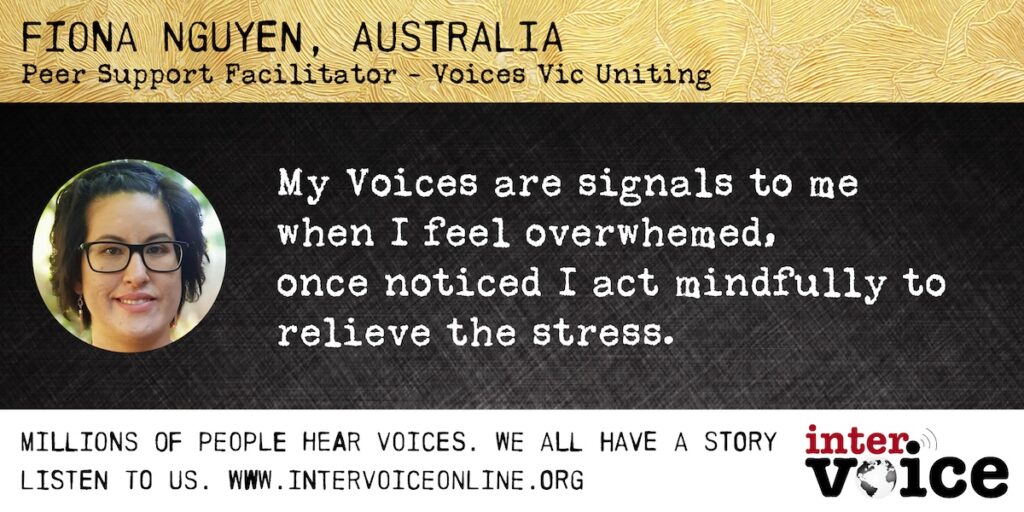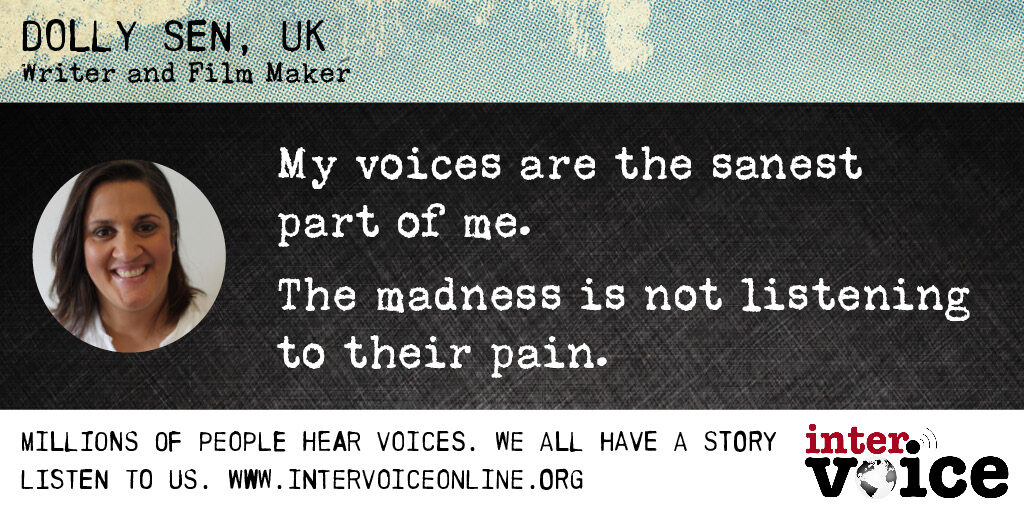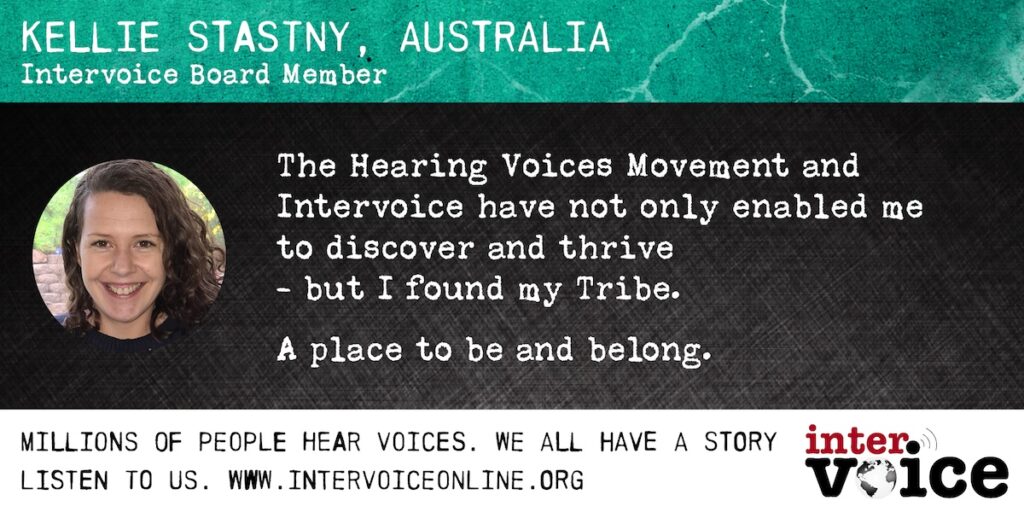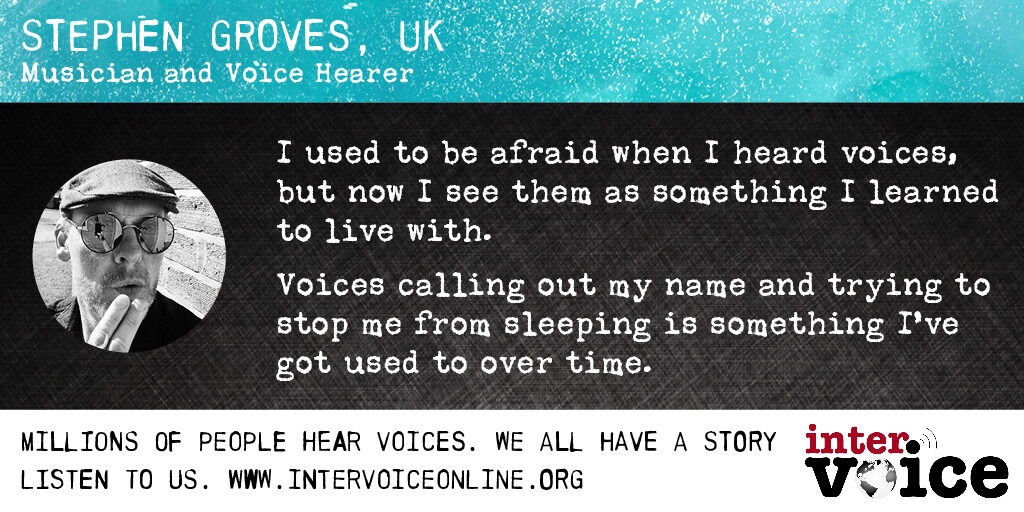What does this all have to do with the voices voice hearers hear?
These voices are not experienced as “ parts”! They are other people that speak to me, they have nothing to do with me! They can attack, they ruin my life. They forbid me things. I am afraid of them. They challenge everything I want. They tell me to do what I don’t want. They have full power of me! This “Voice Dialogue” is another therapeutic trick to convince me that my opinions are wrong. I want to get rid of my voices! They are my enemies.
You can’t deny that your voices are yours. You own them. You have a relationship with them. They came in your life at a difficult moment. There is no magical trick that you can get rid of them.You live with them. That is a reality. It is like a partner that will not disappear. You dislike him, but you can’t divorce. You didn’t ask for it. But it stays a pain in the ass. You want to fight it but it is too strong. So you better find ways that you can stand it, that you can improve your skills to relate to it.
In our experience voices want to be heard. To be listened to. They want to express themselves. Many voices are angry or even malevolent. Angry people want to vent their anger, to express why they are angry. Mostly anger connects to repression. You don’t get what you want. Angry people exaggerate. They were not able or permitted to express what they wanted. They were limited. Voices are ordinary people. They have feelings, motives, shortcomings, possibilities and opinions. They don’t use rational strategies but react out of frustrations.
An example from real life
Paul heard one voice. A very destructive voice. He told Paul to jump in front of the train. He commented all day on everything Paul did and thought. This voice was limiting Paul’s life extremely. Paul was very afraid of the voice. This voice was someone elses. Paul wanted it to disappear.
When the facilitator started to talk to this voice, he wasn’t nice. He expressed his anger and frustration with Paul. He told the facilitator that Paul deserved to die. He, Paul, was a wimp, the voice told. The voice was very frustrated with Paul who never stood up against injustice done to himself. Everybody played with Paul. He always, in every situation, stayed this anxious rabbit.
The voice told that he was angry at Paul all day. That had to be very tiring, the facilitator remarked. Indeed, the voice told he was fed up with this. He wanted Paul to be stronger but all his comments made Paul more anxious and avoiding. The facilitator mentioned that he understood the voice wanted Paul to become stronger. Was that correct? Yes, it was. Is the way you want to help Paul effective? No, Paul became weaker and weaker. When Paul becomes less anxious? If you support him, the voice said. Do you know how to do this? No. So the facilitator told about how he had learned to support anxious people. The voice was interested. Do you want to become his “Teacher”? Much less tiresome! This idea attracted the voice and from that time on he was changed from a destructive bullying voice to a supportive companion that tried to positively help him to express what he needed.
In the following sessions the facilitator helped the voice to improve his supportive qualities. Until this day this voice didn’t return to his old nagging and criticizing attitude. Paul acquired a true mate.
So in talking to the voices we essentially use the same non-judgemental attitude that is asked for in the Voice Dialogue practice. Of course we disagree with destructive attitudes! We don’t want people to being hurt.
But mostly there is ground for such an attitude, we want to explore these motives.
What happened in the life of the voice hearer that the voices appeared in such a negative way. We want to talk about what made the voice frustrated, we want to support the voice hearer to become more equal to the voices. We support the voice and the voice hearer they are both not happy in their entanglement. We aim at a better understanding between each other and strive for improving the positive qualities of the voice hearer to cope better with life.
If there are positive voices too, we encourage support from them.
3. How does a session work?
The facilitator starts by asking the voice hearer how he and the the voices would feel about talking to them directly. She asks why the voice hearer and the voices find it a good idea or not.
The facilitator gives an extensive explanation about the method and its purposes. She informs the voice hearer that the voices need to agree to talk. If the voices don’t want than it is important to explain what the advantages can be.
The facilitator never forces the voice hearer or the voices to do this work.
All three parties: the facilitator, the voice hearer and the voices must agree and feel feel safe with it. If not we don’t do this kind of work. There are also other ways to work together and achieve a better relationship with the voices.
The facilitator gives examples of positive experiences with the method to stimulate the interest of voice hearer and voices. The facilitator acts as if she is talking to individual members of a continually present group, the whole group must give consent.
Some voices don’t want and other do, then the facilitator asks what the consequences can be.
The advantage we want to go for is that they understand each other better, that there will be a better relationship with the voices.
If the voice hearer wants to stay in control, the therapist can speak indirectly to the voices, asking questions that are formulated by the voice hearer as an interpreter. This can be a warming up or the only practice the voice hearer wants.
Before the start the facilitator initiates a discussion with the voice hearer about which voice he/she wants to speak first.
Preferably start with a familiar but not too threatening one.
Then the facilitator asks the voice hearer to concentrate on the particular voice. When there is proper contact with this voice the voice hearer is asked to take another place in the room. The chair is placed there where the voice hearer thinks the voice is at the right distance, in the right position.
The facilitator welcomes the voice and tries to find a suitable attitude towards the prevalent voice that now has taken over the conversation.
Then the following questions will be asked:
- Who are you? Do you have a name?
- How old are you?
- Does the voice hearer know you?
- When did you come in the life of (name of voice hearer)?
- (Directly addressing to the voice and talk about the person as another stimulates the voice to be present.)
- What was the reason or your motive for you to come to (name)?
- What were the circumstances at that time in the life of (name)?
- What happened in the life of (name)?
- What did you have to care for or do for (name) ?
- What do you want to achieve for (name)?
- What would happen with (name) if you would not be there?
- How does (name of voice hearer) relates to you?
- How is it to take care for (name)?
- Would you like something to change in your relationship with (name)?
- When these kind of questions are answered the facilitator thanks the voice for his explanations.
The common last question is:
- is there anything you want to advise/suggest to (name)?
When the facilitator wants to finish the dialogue, she asks if the voice does not mind to close the talk and perhaps wants to have another talk another time. After the permission the facilitator greets the voice in the sense of saying goodbye to the voice, and can make another compliment.
We then return to the voice hearer in the beginning position. Back to the middle position.
The facilitator encourages reflecting on what happened. Often the voice hearer is surprised by what happened and starts to feel some distance to that particular voice.
The facilitator and voice hearer discuss how it feels having had this interview with the voice and what the voice hearer thinks about what the voice said. Probably another voice will come up. Then the same procedure is repeated, if the voice hearer wants this and dependent on the time that is left.
At closure the “Awareness” phase is initiated. The facilitator asks the voice hearer to stand next to her. Together viewing at the scene and the facilitator summarizes what she saw happening. Most voice hearers appreciate this. Thus they become (more) aware of the process that was going on. The facilitator is not judging what happened but merely tells what she saw.
The facilitator encourages the voice hearer to continue to make contact with the voices at home. And to think about other potentials for changing the relationship.
In advance questions to the voices for next session can be scheduled.
We trust that after such a process is initiated voice hearer and voices work things further out themselves. It is helpful to keep a diary of what happens. Sessions can also be summarized on paper afterwards by the voice hearer. Sometimes a voice hearer wants the session (video-) taped.
4. Attitudes
The voice-hearer is the owner.
At any moment the voice hearer can interfere in the ongoing process. The facilitator states that it is preferable (obligatory?) for the voice hearer not to disappear completely during the session. It is important to remember and to learn from it. He must stay in charge and take responsibility for that.
The facilitator is not the enemy of the voices.
In traditional psychiatry the approach that prevails is that one should get rid of the voices. You should not listen to the voices and distract yourself. The experience of voice hearing is often not positively acknowledged. Of course, it should be convenient that the voices’ influence on you will diminish. But sending them away is not our goal. Probably you come in a situation where the voice withdraw if they have “done their work”. If the underlying problem is solved.
Non-judgemental, relaxed:
Facilitators are trained not to judge, not to go in discussion with the voices. The facilitator won’t work with your voices if he is afraid of them. The facilitator must feel confident and relaxed, although it is an exiting endeavour to talk with voices.
The facilitator wants to get to know the voices.
The facilitator expresses curiousness in how you and the voices are doing together. Often the voices are not happy with the entanglement they are trapped in. The facilitator expresses empathy.
Respectful, but not submissive.
The facilitator has a respectful attitude towards what and who are presented. But they are firmly opposed to hurting someone. The facilitator wants to stimulate autonomy, not an obeying or destructive life style.
Match the energy of the voice.
The facilitator has some experience with her own selves. During facilitation she finds support from her selves that match best with the voice that is presented. E.g. when an anxious voice is in action, the facilitator seeks support from her own anxious selves, but stays in a neutral and aware attitude. In this way the contact with the voice can improve through empathy.
Assertive stance when challenging the voices, not argumentative.
The facilitator is capable of not being challenged into arguments. She stays firm but doesn’t take a moral standpoint.
Respect is the ethical principle.












